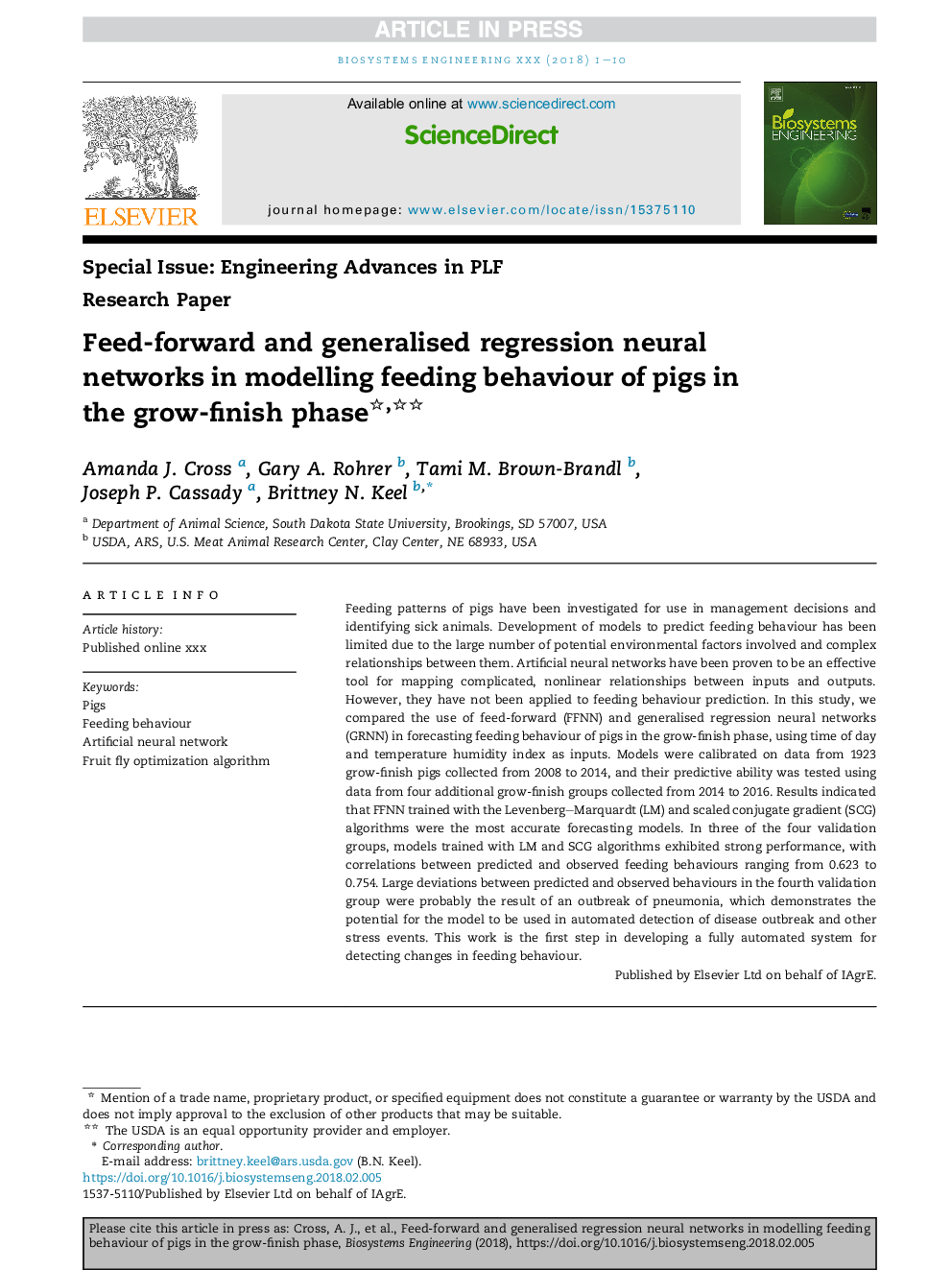| Article ID | Journal | Published Year | Pages | File Type |
|---|---|---|---|---|
| 11019847 | Biosystems Engineering | 2018 | 10 Pages |
Abstract
Feeding patterns of pigs have been investigated for use in management decisions and identifying sick animals. Development of models to predict feeding behaviour has been limited due to the large number of potential environmental factors involved and complex relationships between them. Artificial neural networks have been proven to be an effective tool for mapping complicated, nonlinear relationships between inputs and outputs. However, they have not been applied to feeding behaviour prediction. In this study, we compared the use of feed-forward (FFNN) and generalised regression neural networks (GRNN) in forecasting feeding behaviour of pigs in the grow-finish phase, using time of day and temperature humidity index as inputs. Models were calibrated on data from 1923 grow-finish pigs collected from 2008 to 2014, and their predictive ability was tested using data from four additional grow-finish groups collected from 2014 to 2016. Results indicated that FFNN trained with the Levenberg-Marquardt (LM) and scaled conjugate gradient (SCG) algorithms were the most accurate forecasting models. In three of the four validation groups, models trained with LM and SCG algorithms exhibited strong performance, with correlations between predicted and observed feeding behaviours ranging from 0.623 to 0.754. Large deviations between predicted and observed behaviours in the fourth validation group were probably the result of an outbreak of pneumonia, which demonstrates the potential for the model to be used in automated detection of disease outbreak and other stress events. This work is the first step in developing a fully automated system for detecting changes in feeding behaviour.
Related Topics
Physical Sciences and Engineering
Engineering
Control and Systems Engineering
Authors
Amanda J. Cross, Gary A. Rohrer, Tami M. Brown-Brandl, Joseph P. Cassady, Brittney N. Keel,
